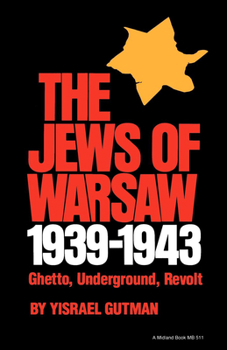The Jews of Warsaw, 1939-1943: Ghetto, Underground, Revolt (A Midland Book)
(Part of the A Midland Book Series)
Select Format
Select Condition 
Book Overview
It took the Nazis longer to quell the Warsaw ghetto uprising than it had taken them to defeat entire countries. How could the Jews of Warsaw--starved and persecuted, their numbers decimated by mass deportations to concentration camps, with few weapons and no aid from outside the ghetto walls--stand up to the might of the Third Reich? To address this question, the author of The Jews of Warsaw, 1939-1943 looks beyond the ghetto uprising itself to consider the broader character of Jewish public life as it took shape during the occupation and ghettoization of what had been Europe's greatest Jewish urban center. The book describes the growth and development of the resistance movement and armed struggle against the wider historical background and the development of clandestine communal activiies in the ghetto. It makes use of extensive primary and secondary materials from Jewish, German, and Polish sources to throw light on critical events. The Jews of Warsawy, 1939-1943 is a massive scholarly undertaking, at once authentic, scrupulously objective, and deeply moving.






